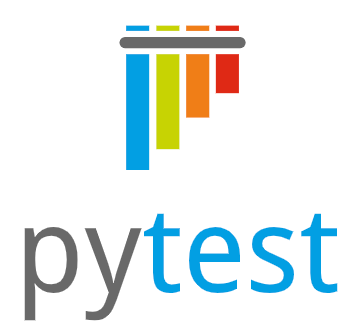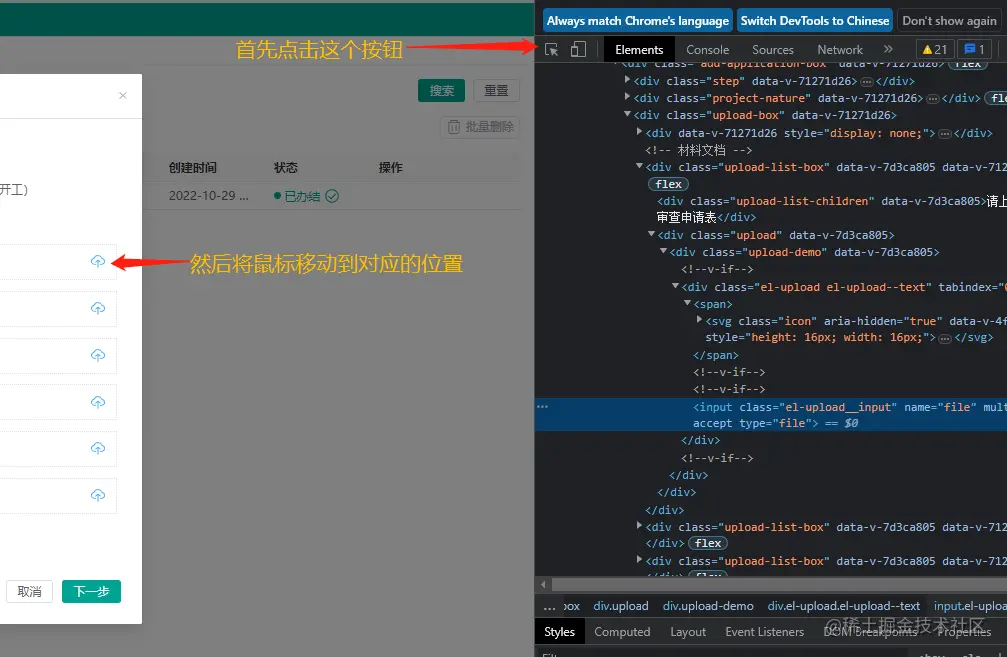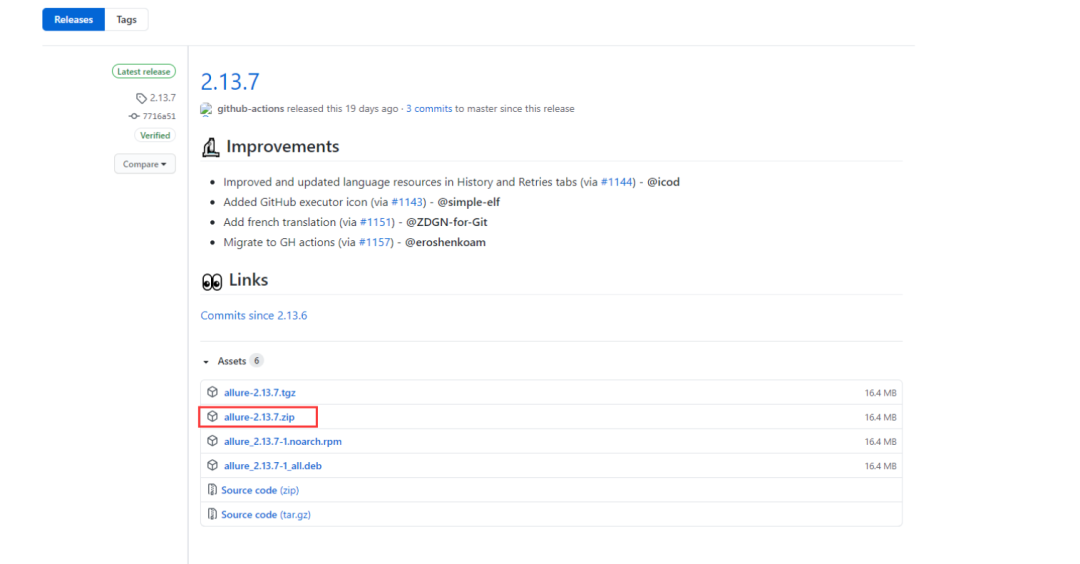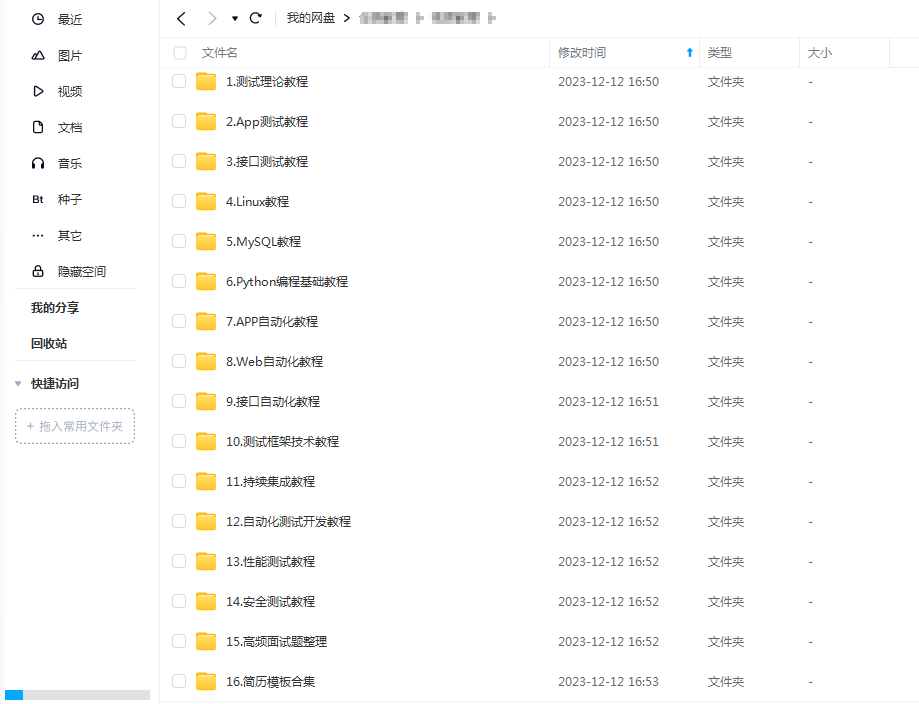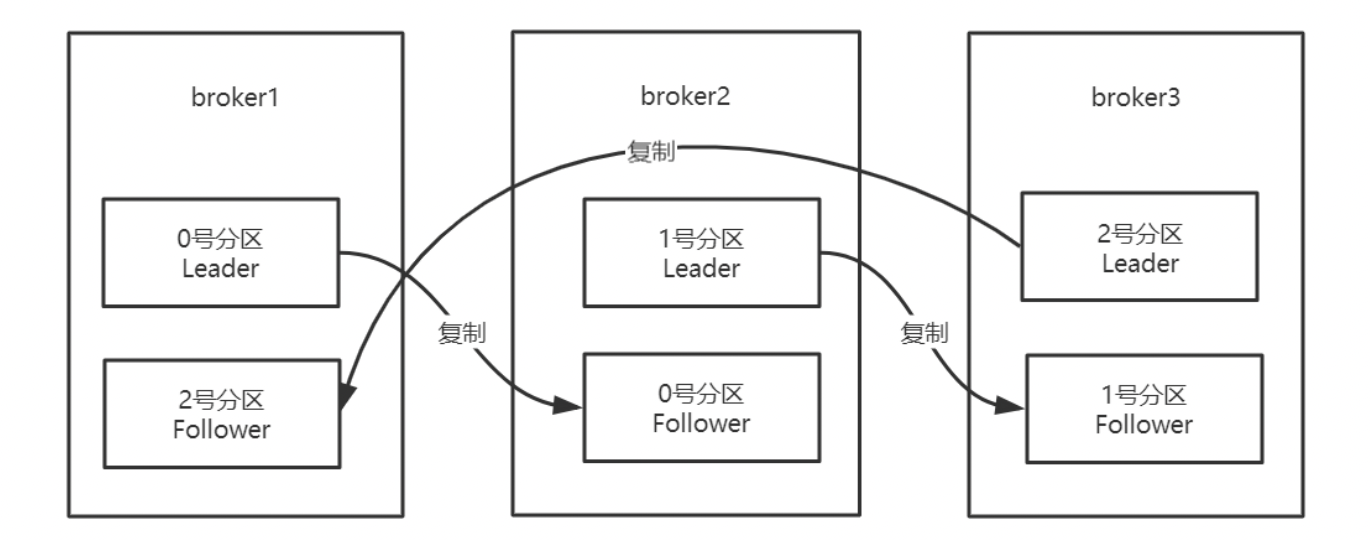【Spring连载】使用Spring访问 Apache Kafka(二十)----测试应用Testing Applications
spring-kafka-test jar包含一些有用的工具来帮助测试你的应用程序。
一、KafkaTestUtils
o.s.kafka.test.utils.KafkaTestUtils提供了许多静态helper方法来消费记录、检索各种记录偏移量等。请参阅其Javadocs以获得完整的详细信息。
二、JUnit
o.s.kafka.test.utils.KafkaTestUtils还提供了一些静态方法来设置生产者和消费者属性。下面的清单显示了这些方法签名:
/**
* Set up test properties for an {@code <Integer, String>} consumer.
* @param group the group id.
* @param autoCommit the auto commit.
* @param embeddedKafka a {@link EmbeddedKafkaBroker} instance.
* @return the properties.
*/
public static Map<String, Object> consumerProps(String group, String autoCommit,
EmbeddedKafkaBroker embeddedKafka) {
... }
/**
* Set up test properties for an {@code <Integer, String>} producer.
* @param embeddedKafka a {@link EmbeddedKafkaBroker} instance.
* @return the properties.
*/
public static Map<String, Object> producerProps(EmbeddedKafkaBroker embeddedKafka) {
... }
从2.5版本开始,consumerProps方法设置ConsumerConfig.AUTO_OFFSET_RESET_CONFIG到earliest。这是因为,在大多数情况下,你希望consumer 消费在测试用例中发送的任何消息。ConsumerConfig默认值是latest,这意味着在consumer启动之前,测试已经发送的消息将不会被收到。若要恢复到以前的行为,请在调用方法后将属性设置为latest。
当使用嵌入式(embedded) broker时,通常最佳做法是为每个测试使用不同的主题,以防止串扰(cross-talk)。如果由于某种原因无法做到这一点,请注意consumeFromEmbeddedTopics方法的默认行为是在分配后seek分配的分区到开头。由于它无法访问consumer属性,因此必须使用重载方法,该方法使用seekToEnd布尔参数来seek到末尾而不是开头。
框架提供了一个EmbeddedKafkaBroker的JUnit4@Rule wrapper,用于创建一个嵌入式Kafka和一个嵌入式Zookeeper服务器。(有关在JUnit 5中使用@EmbeddedKafka的信息,请参阅 @EmbeddedKafka注解)。以下列表显示了这些方法的签名:
/**
* Create embedded Kafka brokers.
* @param count the number of brokers.
* @param controlledShutdown passed into TestUtils.createBrokerConfig.
* @param topics the topics to create (2 partitions per).
*/
public EmbeddedKafkaRule(int count, boolean controlledShutdown, String... topics) {
... }
/**
*
* Create embedded Kafka brokers.
* @param count the number of brokers.
* @param controlledShutdown passed into TestUtils.createBrokerConfig.
* @param partitions partitions per topic.
* @param topics the topics to create.
*/
public EmbeddedKafkaRule(int count, boolean controlledShutdown, int partitions, String... topics) {
... }
EmbeddedKafkaBroker类有一个utility方法,可以消费它创建的所有主题。以下示例显示了如何使用它:
Map<String, Object> consumerProps = KafkaTestUtils.consumerProps("testT", "false", embeddedKafka);
DefaultKafkaConsumerFactory<Integer, String> cf = new DefaultKafkaConsumerFactory<Integer, String>(
consumerProps);
Consumer<Integer, String> consumer = cf.createConsumer();
embeddedKafka.consumeFromAllEmbeddedTopics(consumer);
KafkaTestUtils有一些utility方法可以从消费者那里获取结果。下面的清单显示了这些方法签名:
/**
* Poll the consumer, expecting a single record for the specified topic.
* @param consumer the consumer.
* @param topic the topic.
* @return the record.
* @throws org.junit.ComparisonFailure if exactly one record is not received.
*/
public static <K, V> ConsumerRecord<K, V> getSingleRecord(Consumer<K, V> consumer, String topic) {
... }
/**
* Poll the consumer for records.
* @param consumer the consumer.
* @return the records.
*/
public static <K, V> ConsumerRecords<K, V> getRecords(Consumer<K, V> consumer) {
... }
下面的例子展示了如何使用KafkaTestUtils:
...
template.sendDefault(0, 2, "bar");
ConsumerRecord<Integer, String> received = KafkaTestUtils.getSingleRecord(consumer, "topic");
...
当嵌入式Kafka和嵌入式Zookeeper服务器由EmbeddedKafkaBroker启动时,名为spring.embedded.kafka.brokers的系统属性被设置为Kafka broker的地址,名为spring.embedded.zookeeper.connect的系统属性则被设置为Zookeeper的地址。EmbeddedKafkaBroker.SPRING_EMBEDDED_KAFKA_BROKERS 和EmbeddedKafkaBroker.SPRING_EMBEDDED_ZOOKEEPER_CONNECT为两个属性提供了方便的常量。
Kafka brokers的地址可以暴露给任意的属性,而不是默认的spring.embedded.kafka.brokers系统属性。为此,可以在启动嵌入式kafka之前设置spring.embedded.kafka.brokers.property (EmbeddedKafkaBroker.BROKER_LIST_PROPERTY)系统属性。例如,对于Spring Boot,需要分别为自动配置的kafka客户端设置spring.kafka.bootstrap-servers配置属性。因此,在随机端口上使用嵌入式Kafka运行测试之前,我们可以将spring.embedded.kafka.brokers.property=spring.kafka.bootstrap-servers设置为系统属性,EmbeddedKafkaBroker将使用它来暴露其broker地址。这现在是此属性的默认值(从3.0.10版本开始)。
使用EmbeddedKafkaBroker.brokerProperties(Map<String, String>),你可以为Kafka服务器提供额外的属性。有关broker属性的更多信息,请参阅Kafka Config。
三、配置主题Configuring Topics
下面的配置示例创建了名为cat和hat的主题,每个主题包含5个分区,名为thing1的主题包含10个分区,名为thing2的主题包含15个分区:
public class MyTests {
@ClassRule
private static EmbeddedKafkaRule embeddedKafka = new EmbeddedKafkaRule(1, false, 5, "cat", "hat");
@Test
public void test() {
embeddedKafkaRule.getEmbeddedKafka()
.addTopics(new NewTopic("thing1", 10, (short) 1), new NewTopic("thing2", 15, (short) 1));
...
}
}
默认情况下,addTopics会在出现问题时抛出异常(例如添加已存在的主题)。版本2.6添加了该方法的新版本,该方法返回Map<String, Exception>;键是主题名称,值为null表示成功,值为Exception表示失败。
四、为多个测试类使用相同的broker,Using the Same Broker(s) for Multiple Test Classes
你可以为多个测试类使用相同的broker,类似于如下代码:
public final class EmbeddedKafkaHolder {
private static EmbeddedKafkaBroker embeddedKafka = new EmbeddedKafkaBroker(1, false)
.brokerListProperty("spring.kafka.bootstrap-servers");
private static boolean started;
public static EmbeddedKafkaBroker getEmbeddedKafka() {
if (!started) {
try {
embeddedKafka.afterPropertiesSet();
}
catch (Exception e) {
throw new KafkaException("Embedded broker failed to start", e);
}
started = true;
}
return embeddedKafka;
}
private EmbeddedKafkaHolder() {
super();
}
}
这里假定是Spring Boot环境,嵌入式broker取代了bootstrap servers属性。然后,在每个测试类中,你可以使用类似于以下内容:
static {
EmbeddedKafkaHolder.getEmbeddedKafka().addTopics("topic1", "topic2");
}
private static final EmbeddedKafkaBroker broker = EmbeddedKafkaHolder.getEmbeddedKafka();
如果你没有使用Spring Boot,则可以使用broker.getBrokersAsString()获取bootstrap servers。
前面的示例没有提供在所有测试完成时关闭broker的机制。如果您在Gradle守护进程中运行测试,这可能会成为一个问题。在这种情况下,你不应该使用此技术,或者你应该在测试完成后在EmbeddedKafkaBroker上调用destroy()。
从3.0版本开始,框架为JUnit平台暴露了一个GlobalEmbeddedKafkaTestExecutionListener;它在默认情况下被禁用。这需要JUnit平台1.8或更高版本。这个监听器的目的是为整个测试计划启动一个全局EmbeddedKafkaBroker,并在计划结束时停止它。为了启用这个监听器,并因此为项目中的所有测试提供一个全局嵌入式Kafka集群,spring.kafka.global.embedded.enabled属性必须通过系统属性或JUnit平台配置设置为true。此外,还可以提供以下特性:
- spring.kafka.embedded.count——要管理的kafka broker的数量;
- spring.kafka.embedded.ports——每个kafka broker启动的端口(逗号分隔值),如果首选随机端口,则为0;值的数量必须等于上述count;
- spring.kafka.embedded.topics——要在启动的kafka集群中创建的主题(逗号分隔值);
- spring.kafka.embedded.partitions——为创建的主题提供的分区数;
- spring.kafka.embedded.broker.properties.location——其他kafka broker配置属性的文件位置;此属性的值必须遵循Spring资源抽象模式。
从本质上讲,这些属性模仿了一些@EmbeddedKafka属性。
请参阅《JUnit 5用户指南》中有关配置属性以及如何提供这些属性的更多信息。例如,spring.embedded.kafka.brokers.property=my.bootstrap-servers条目可以添加到测试类路径中的junit-platform.properties文件中。从3.0.10版本开始,默认情况下,broker会自动将其设置为spring.kafka.bootstrap-servers,用于使用Spring Boot应用程序进行测试。
建议不要在单个测试套件中组合全局embedded Kafka和每个测试类。两者共享相同的系统属性,因此很可能会导致意外行为。
spring-kafka-test对junit-jupiter-api和junit-platform-launcher(后者支持全局嵌入式代理)具有可传递的依赖关系。如果你希望使用嵌入式broker,而不使用JUnit,则需要排除这些依赖项。
五、@EmbeddedKafka 注解
我们通常建议你将该rule用作@ClassRule,以避免在测试之间启动和停止broker(并为每个测试使用不同的主题)。从2.0版本开始,如果使用Spring的测试应用程序上下文缓存,还可以声明一个EmbeddedKafkaBroker bean,因此可以在多个测试类中使用单个broker 。为了方便起见,框架提供了一个名为@EmbeddedKafka的测试类级注解来注册EmbeddedKafkaBroker bean。以下示例显示了如何使用它:
@RunWith(SpringRunner.class)
@DirtiesContext
@EmbeddedKafka(partitions = 1,
topics = {
KafkaStreamsTests.STREAMING_TOPIC1,
KafkaStreamsTests.STREAMING_TOPIC2 })
public class KafkaStreamsTests {
@Autowired
private EmbeddedKafkaBroker embeddedKafka;
@Test
public void someTest() {
Map<String, Object> consumerProps = KafkaTestUtils.consumerProps("testGroup", "true", this.embeddedKafka);
consumerProps.put(ConsumerConfig.AUTO_OFFSET_RESET_CONFIG, "earliest");
ConsumerFactory<Integer, String> cf = new DefaultKafkaConsumerFactory<>(consumerProps);
Consumer<Integer, String> consumer = cf.createConsumer();
this.embeddedKafka.consumeFromAnEmbeddedTopic(consumer, KafkaStreamsTests.STREAMING_TOPIC2);
ConsumerRecords<Integer, String> replies = KafkaTestUtils.getRecords(consumer);
assertThat(replies.count()).isGreaterThanOrEqualTo(1);
}
@Configuration
@EnableKafkaStreams
public static class KafkaStreamsConfiguration {
@Value("${" + EmbeddedKafkaBroker.SPRING_EMBEDDED_KAFKA_BROKERS + "}")
private String brokerAddresses;
@Bean(name = KafkaStreamsDefaultConfiguration.DEFAULT_STREAMS_CONFIG_BEAN_NAME)
public KafkaStreamsConfiguration kStreamsConfigs() {
Map<String, Object> props = new HashMap<>();
props.put(StreamsConfig.APPLICATION_ID_CONFIG, "testStreams");
props.put(StreamsConfig.BOOTSTRAP_SERVERS_CONFIG, this.brokerAddresses);
return new KafkaStreamsConfiguration(props);
}
}
}
从2.2.4版本开始,你还可以使用@EmbeddedKafka注解来指定Kafka ports属性。
以下示例设置@EmbeddedKafka支持属性占位符解析的topics、brokerProperties和brokerPropertiesLocation属性:
@TestPropertySource(locations = "classpath:/test.properties")
@EmbeddedKafka(topics = {
"any-topic", "${kafka.topics.another-topic}" },
brokerProperties = {
"log.dir=${kafka.broker.logs-dir}",
"listeners=PLAINTEXT://localhost:${kafka.broker.port}",
"auto.create.topics.enable=${kafka.broker.topics-enable:true}" },
brokerPropertiesLocation = "classpath:/broker.properties")
在前面的示例中,属性占位符${kafka.topics.another-topic}, ${kafka.broker.logs-dir}, 和 ${kafka.broker.port}是从Spring环境中解析的。此外,broker属性是从brokerPropertiesLocation指定的broker.properties类路径资源加载的。框架将解析brokerPropertiesLocation URL的属性占位符以及在资源中找到的任何属性占位符。brokerProperties定义的属性会覆盖在brokerPropertiesLocation中找到的属性。
你可以将@EmbeddedKafka注解与JUnit 4或JUnit 5一起使用。
六、配合JUnit5使用@EmbeddedKafka注解
从2.3版本开始,有两种方法可以将@EmbeddedKafka注解与JUnit5一起使用。当与@SpringJunitConfig注解一起使用时,嵌入式broker会添加到测试应用程序上下文中。你可以在类或方法级别将broker自动装配到测试中,以获取broker地址列表。
当不使用spring测试上下文时,EmbdeddedKafkaCondition会创建一个broker;该条件包括一个参数解析器,因此你可以在测试方法中访问代理…
@EmbeddedKafka
public class EmbeddedKafkaConditionTests {
@Test
public void test(EmbeddedKafkaBroker broker) {
String brokerList = broker.getBrokersAsString();
...
}
}
如果用@EmbeddedBroker注解的类没有用ExtendedWith(SpringExtension.class)进行注解(或元注解),则将创建一个独立的(而不是Spring测试上下文)broker。@SpringJunitConfig和@SpringBootTest是这样的元注解,并且当他们中任意一个注解存在时,将使用基于上下文的broker。
当有可用的Spring测试应用程序上下文时,主题和broker属性可以包含属性占位符,只要在某个地方定义了属性,就会解析这些占位符。如果没有可用的Spring上下文,则不会解析这些占位符。
七、@SpringBootTest注解中的嵌入式Broker
Spring Initializr现在以test scope自动将spring-kafka-test依赖项添加到项目配置中。
如果你的应用程序在spring-cloud-stream中使用Kafka binder,并且如果你想使用嵌入式broker进行测试,则必须删除spring-cloud-stream-test-support依赖项,因为它用测试用例的测试binder替换了真正的binder。如果希望某些测试使用测试binder,而某些测试使用嵌入式broker,则使用真实binder的测试需要通过排除测试类中的binder自动配置来禁用测试binder。以下示例展示了如何执行此操作:
@RunWith(SpringRunner.class)
@SpringBootTest(properties = "spring.autoconfigure.exclude="
+ "org.springframework.cloud.stream.test.binder.TestSupportBinderAutoConfiguration")
public class MyApplicationTests {
...
}
有几种方法可以在Spring Boot应用程序测试中使用嵌入式broker。
它们包括:
- JUnit4 Class Rule
- @EmbeddedKafka 注解或 EmbeddedKafkaBroker Bean
7.1 JUnit4 Class Rule
下面的例子展示了如何使用JUnit4 class rule来创建嵌入式代理:
@RunWith(SpringRunner.class)
@SpringBootTest
public class MyApplicationTests {
@ClassRule
public static EmbeddedKafkaRule broker = new EmbeddedKafkaRule(1,
false, "someTopic")
.brokerListProperty("spring.kafka.bootstrap-servers");
}
@Autowired
private KafkaTemplate<String, String> template;
@Test
public void test() {
...
}
}
注意,由于这是一个Spring Boot应用程序,因此我们重写broker list属性来设置Boot的属性。
7.2 @EmbeddedKafka 注解或 EmbeddedKafkaBroker Bean
下面的例子展示了如何使用@EmbeddedKafka 注解来创建一个嵌入式broker:
@RunWith(SpringRunner.class)
@EmbeddedKafka(topics = "someTopic",
bootstrapServersProperty = "spring.kafka.bootstrap-servers") // this is now the default
public class MyApplicationTests {
@Autowired
private KafkaTemplate<String, String> template;
@Test
public void test() {
...
}
}
从3.0.10版本开始,默认情况下,bootstrapServersProperty被自动设置为spring.kafka.bootstrap-servers。
八、Hamcrest Matchers
o.s.kafka.test.hamcrest.KafkaMatchers提供了以下匹配器:
/**
* @param key the key
* @param <K> the type.
* @return a Matcher that matches the key in a consumer record.
*/
public static <K> Matcher<ConsumerRecord<K, ?>> hasKey(K key) {
... }
/**
* @param value the value.
* @param <V> the type.
* @return a Matcher that matches the value in a consumer record.
*/
public static <V> Matcher<ConsumerRecord<?, V>> hasValue(V value) {
... }
/**
* @param partition the partition.
* @return a Matcher that matches the partition in a consumer record.
*/
public static Matcher<ConsumerRecord<?, ?>> hasPartition(int partition) {
... }
/**
* Matcher testing the timestamp of a {@link ConsumerRecord} assuming the topic has been set with
* {@link org.apache.kafka.common.record.TimestampType#CREATE_TIME CreateTime}.
*
* @param ts timestamp of the consumer record.
* @return a Matcher that matches the timestamp in a consumer record.
*/
public static Matcher<ConsumerRecord<?, ?>> hasTimestamp(long ts) {
return hasTimestamp(TimestampType.CREATE_TIME, ts);
}
/**
* Matcher testing the timestamp of a {@link ConsumerRecord}
* @param type timestamp type of the record
* @param ts timestamp of the consumer record.
* @return a Matcher that matches the timestamp in a consumer record.
*/
public static Matcher<ConsumerRecord<?, ?>> hasTimestamp(TimestampType type, long ts) {
return new ConsumerRecordTimestampMatcher(type, ts);
}
九、AssertJ Conditions
你可以使用以下AssertJ条件:
/**
* @param key the key
* @param <K> the type.
* @return a Condition that matches the key in a consumer record.
*/
public static <K> Condition<ConsumerRecord<K, ?>> key(K key) {
... }
/**
* @param value the value.
* @param <V> the type.
* @return a Condition that matches the value in a consumer record.
*/
public static <V> Condition<ConsumerRecord<?, V>> value(V value) {
... }
/**
* @param key the key.
* @param value the value.
* @param <K> the key type.
* @param <V> the value type.
* @return a Condition that matches the key in a consumer record.
* @since 2.2.12
*/
public static <K, V> Condition<ConsumerRecord<K, V>> keyValue(K key, V value) {
... }
/**
* @param partition the partition.
* @return a Condition that matches the partition in a consumer record.
*/
public static Condition<ConsumerRecord<?, ?>> partition(int partition) {
... }
/**
* @param value the timestamp.
* @return a Condition that matches the timestamp value in a consumer record.
*/
public static Condition<ConsumerRecord<?, ?>> timestamp(long value) {
return new ConsumerRecordTimestampCondition(TimestampType.CREATE_TIME, value);
}
/**
* @param type the type of timestamp
* @param value the timestamp.
* @return a Condition that matches the timestamp value in a consumer record.
*/
public static Condition<ConsumerRecord<?, ?>> timestamp(TimestampType type, long value) {
return new ConsumerRecordTimestampCondition(type, value);
}
十、示例
下面的例子汇集了本文涵盖的大部分主题:
public class KafkaTemplateTests {
private static final String TEMPLATE_TOPIC = "templateTopic";
@ClassRule
public static EmbeddedKafkaRule embeddedKafka = new EmbeddedKafkaRule(1, true, TEMPLATE_TOPIC);
@Test
public void testTemplate() throws Exception {
Map<String, Object> consumerProps = KafkaTestUtils.consumerProps("testT", "false",
embeddedKafka.getEmbeddedKafka());
DefaultKafkaConsumerFactory<Integer, String> cf =
new DefaultKafkaConsumerFactory<Integer, String>(consumerProps);
ContainerProperties containerProperties = new ContainerProperties(TEMPLATE_TOPIC);
KafkaMessageListenerContainer<Integer, String> container =
new KafkaMessageListenerContainer<>(cf, containerProperties);
final BlockingQueue<ConsumerRecord<Integer, String>> records = new LinkedBlockingQueue<>();
container.setupMessageListener(new MessageListener<Integer, String>() {
@Override
public void onMessage(ConsumerRecord<Integer, String> record) {
System.out.println(record);
records.add(record);
}
});
container.setBeanName("templateTests");
container.start();
ContainerTestUtils.waitForAssignment(container,
embeddedKafka.getEmbeddedKafka().getPartitionsPerTopic());
Map<String, Object> producerProps =
KafkaTestUtils.producerProps(embeddedKafka.getEmbeddedKafka());
ProducerFactory<Integer, String> pf =
new DefaultKafkaProducerFactory<Integer, String>(producerProps);
KafkaTemplate<Integer, String> template = new KafkaTemplate<>(pf);
template.setDefaultTopic(TEMPLATE_TOPIC);
template.sendDefault("foo");
assertThat(records.poll(10, TimeUnit.SECONDS), hasValue("foo"));
template.sendDefault(0, 2, "bar");
ConsumerRecord<Integer, String> received = records.poll(10, TimeUnit.SECONDS);
assertThat(received, hasKey(2));
assertThat(received, hasPartition(0));
assertThat(received, hasValue("bar"));
template.send(TEMPLATE_TOPIC, 0, 2, "baz");
received = records.poll(10, TimeUnit.SECONDS);
assertThat(received, hasKey(2));
assertThat(received, hasPartition(0));
assertThat(received, hasValue("baz"));
}
}
前面的示例使用Hamcrest匹配器。如果使用AssertJ,最后一部分看起来像下面的代码:
assertThat(records.poll(10, TimeUnit.SECONDS)).has(value("foo"));
template.sendDefault(0, 2, "bar");
ConsumerRecord<Integer, String> received = records.poll(10, TimeUnit.SECONDS);
// using individual assertions
assertThat(received).has(key(2));
assertThat(received).has(value("bar"));
assertThat(received).has(partition(0));
template.send(TEMPLATE_TOPIC, 0, 2, "baz");
received = records.poll(10, TimeUnit.SECONDS);
// using allOf()
assertThat(received).has(allOf(keyValue(2, "baz"), partition(0)));
十一、模拟消费者和生产者
kafka-clients库提供了用于测试目的的MockConsumer和MockProducer 类。
如果您希望在监听器容器或KafkaTemplate的一些测试中分别使用这些类,框架现在提供了MockConsumerFactory和MockProducerFactory实现。
这些工厂可以在监听器容器和template中使用,而不是默认工厂,因为默认工厂需要运行的(或嵌入的)broker。
下面是一个返回单个consumer的简单实现示例:
@Bean
ConsumerFactory<String, String> consumerFactory() {
MockConsumer<String, String> consumer = new MockConsumer<>(OffsetResetStrategy.EARLIEST);
TopicPartition topicPartition0 = new TopicPartition("topic", 0);
List<TopicPartition> topicPartitions = Arrays.asList(topicPartition0);
Map<TopicPartition, Long> beginningOffsets = topicPartitions.stream().collect(Collectors
.toMap(Function.identity(), tp -> 0L));
consumer.updateBeginningOffsets(beginningOffsets);
consumer.schedulePollTask(() -> {
consumer.addRecord(
new ConsumerRecord<>("topic", 0, 0L, 0L, TimestampType.NO_TIMESTAMP_TYPE, 0, 0, null, "test1",
new RecordHeaders(), Optional.empty()));
consumer.addRecord(
new ConsumerRecord<>("topic", 0, 1L, 0L, TimestampType.NO_TIMESTAMP_TYPE, 0, 0, null, "test2",
new RecordHeaders(), Optional.empty()));
});
return new MockConsumerFactory(() -> consumer);
}
如果希望使用并发性进行测试,则工厂构造函数中的Supplier lambda每次都需要创建一个新实例。对于MockProducerFactory,有两个构造函数; 一个用于创建简单工厂,另一个用于创建支持事务的工厂。下面是一些例子:
@Bean
ProducerFactory<String, String> nonTransFactory() {
return new MockProducerFactory<>(() ->
new MockProducer<>(true, new StringSerializer(), new StringSerializer()));
}
@Bean
ProducerFactory<String, String> transFactory() {
MockProducer<String, String> mockProducer =
new MockProducer<>(true, new StringSerializer(), new StringSerializer());
mockProducer.initTransactions();
return new MockProducerFactory<String, String>((tx, id) -> mockProducer, "defaultTxId");
}
请注意,在第二种情况下,lambda是一个BiFunction<Boolean, String>,如果调用者想要一个事务生产者,则第一个参数为true;可选的第二个参数包含事务id。这可以是默认值(如构造函数中提供的),也可以由KafkaTransactionManager(或用于本地事务的KafkaTemplate)覆盖(如果配置了此参数)。如果你希望基于事务id使用不同的MockProducer,则会提供事务id。
如果你在多线程环境中使用生产者,BiFunction应该返回多个生产者(可能使用ThreadLocal绑定线程)。
必须通过调用initTransaction()为事务初始化事务性MockProducer。



















